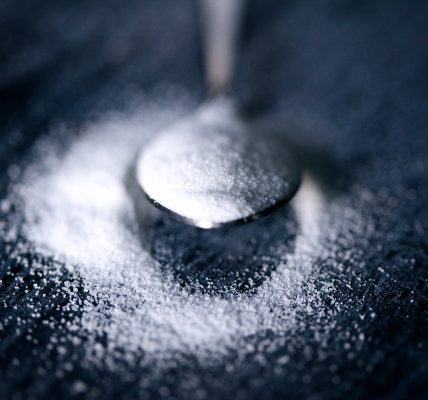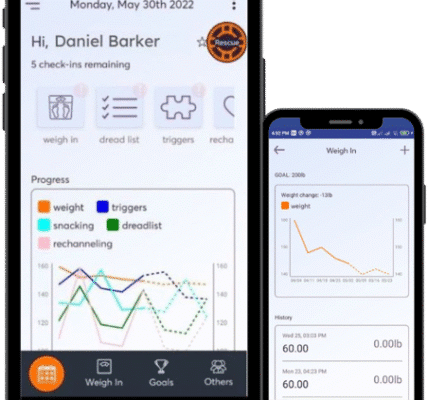Eating Addiction Rages Among Middle-Aged American Women

Something’s up with American women 50-65 years old: their weight! Food addiction rates have grown to 21% of American women in that age bracket, compared with 10% of American men of that age.
A new study from the Institute for Healthcare Policy & Innovation at the University of Michigan points out that these numbers are much higher than those in the 65-80 year-old bracket, where 12% of women suffer from eating addiction and only 4% of men. What’s behind the disproportionate increase in food addiction?
According to an article on the study in SciTechDaily, researchers blame exposure to highly processed “junk food” in youth for causing ultra-processed food addiction (UPFA), essentially placing the blame on the substances consumed. However, a closer examination of the data makes that conclusion seem premature.
First off, let’s take a look at the data. It was gathered through self-reported polling conducted by the University of Michigan National Poll on Healthy Aging. In July 2022, they polled 2,164 Americans aged 50-80. Here are some of the questions:
- How would you describe your weight status?
- In general, how would you rate your physical health?
- In general, how would you rate your mental health?
- In the past year, how often have you felt isolated from others?
Responses used a Likert scale, allowing people to rate themselves on each question. To determine whether participants suffered from eating addiction, researchers used a short form of the Yale Food Addiction Scale known as mYFAS 2.0. It is a 13-item measure of food addiction, described here by the researchers:
This measure assesses the frequency of behaviors like loss of control over intake, intense cravings, withdrawal, tolerance and continued use despite negative consequences when consuming common UPFs, such as chocolates, ice cream, French fries and pizza, within the past year.
Placing the responsibility for UPFA on the availability of junk food during youth is a projection of the University of Michigan research team. Their research shows that a decline in mental health corresponds with the increase in UPFD. It can just as easily be stated that American women aged 50-65 are under greater mental stress than ever, resulting in an increase in eating addiction to displace the stress.
The survey shows that, “Individuals with mental health concerns may be more likely to consume UPFs as a strategy to cope with emotional distress, which may lead to increased vulnerability for the development of UPFA.” That’s a direct quote from their own report, and could have been the basis for blaming the stress, not the ice cream.
Other facts mentioned in the study include that women with poor mental health are nearly three times as likely to be assessed with UPFA, and men with poor mental health are four times as likely. The fact that you could also blame the eating addiction on a deterioration in mental health, rather than on the ingredients in the food, is brought home in this conclusion from the report:
Future research is needed to understand the complex, bi-directional associations between UPF intake, UPFA and mental health functioning in older adults.
Another indicator that it might be mental health driving the eating addiction, not the fast food, is the sharp decline in eating addiction for American women aged 65-80. The same foods are available to them as to the younger women. Why are they not still experiencing food addiction at the same rates?
The answer may well be that American women aged 65-80 are under much less stress than the 50-65 cohort. Measures of lifetime happiness in industrialized countries show women are at their least happiest from age 50-65, experiencing their greatest lifetime happiness shortly after starting to receive a pension at age 65 (see Figure 1).

Figure 1: Lifetime self-reported happiness for men and women, based on annual age. Image courtesy of the U.K. Office for National Statistics.
The correct conclusion might not be that women exposed to junk food in their youth have a higher rate of eating addiction later in life. The correct conclusion may well be that women exposed to increasing amounts of self-reported stress are more likely to have an eating addiction, and that the addiction dissipates when the stress is reduced. It’s possible that banning overtime might reduce eating addiction more than banning junk food.
Written by Steve O’Keefe. First published October 13, 2025.
Sources:
“Ultra-processed food addiction in a nationally representative sample of older adults in the USA,” Addiction, September 29, 2025.
“Many older adults — especially Gen X women — show signs of addiction to ultra-processed foods,” Institute for Healthcare Policy & Innovation, September 29, 2025.
“Ultra-Processed Food Addiction Is Surging in Middle Age Adults,” SciTechDaily, October 3, 2025.
“Milestones: journeying through adulthood,” U.K. Office for National Statistics, December 17, 2019.
Image Copyright: Heute.at, used under Creative Commons license.




